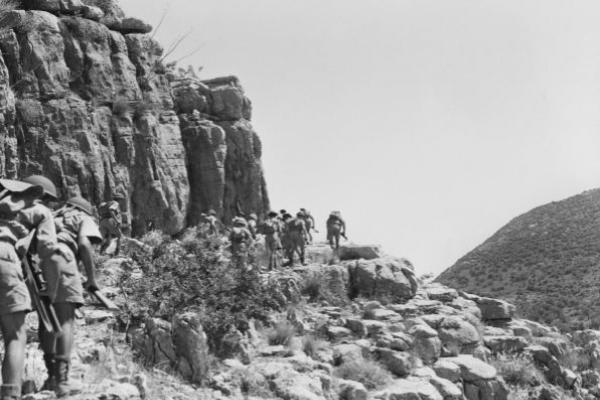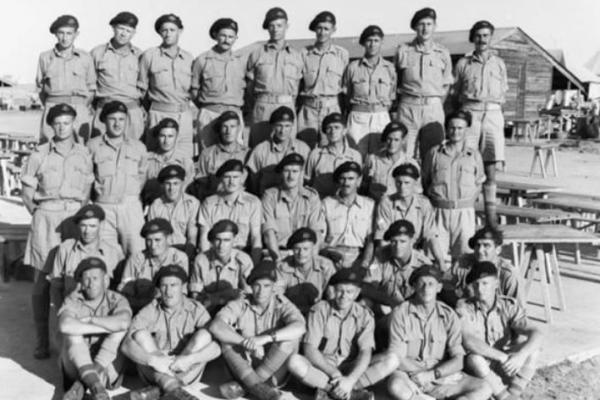80th anniversary of the start of the Syrian Campaign
Eighty years ago Australian troops took part in one of the more unusual campaigns of the Second World War – the Allied invasion of Syria and Lebanon in 1941. The campaign saw countryman fighting against countryman. As troops of the 2/5th Field Regiment advanced through Lebanon, a familiar voice called out from the opposing lines. An Australian serving in the French Foreign Legion explained that he could not bring himself to fight against men from the country of his birth, handed himself over, and was taken prisoner. More than 100 kilometres away, Senegalese troops serving in the French Foreign Legion fought each other in the deserts south of Damascus for control of the ancient Syrian capital. When buglers on each side began to play the Foreign Legion’s marching song, the troops recognised the absurdity of the situation and held their fire. Around the same time, German and Russian soldiers surrendered to British forces at the ancient ruins of Palmyra; the Foreign Legionnaires had held out against overwhelming forces for 12 days in the stifling desert heat. The Germans and Russians served alongside each other only days after Hitler had invaded the Soviet Union.
The Allied invasion of Syria and Lebanon, known as Operation Exporter, arose due to the complex politics of the Middle East during the Second World War. Syria and Lebanon were controlled by the Vichy government established after France was defeated by Germany in 1940, and Britain feared that Nazi Germany might use the territory as a base to attack British oil interests in the Middle East or the Suez Canal. When the Vichy government allowed Germany to use Lebanese and Syrian air bases to support an anti-British revolt in Iraq in April 1941, British Prime Minister Winston Churchill agreed for plans for an invasion of Syria and Lebanon to be drawn up.
While Allied planners expected the campaign to last no more than a few days, the Syria–Lebanon campaign continued for five hard-fought weeks. Troops from the Australian 7th Division formed the bulk of two columns of the main advance, fighting a series of fierce battles against a determined enemy in the rugged and mountainous terrain as they pushed north towards Beirut and Rayak. On their right, a combined force formed from British, Indian and Free French troops attacked through the Syrian desert towards Damascus.
Australians were involved in some of the heaviest fighting of the campaign, including the treacherous crossings of the Litani and Damour rivers, and a series of costly attacks on the former Crusader Castle at Merdjayoun. On 21 June, Australians were among the first troops to enter Damascus.
Victoria Crosses were awarded to Lieutenant Arthur Roden Cutler, and Private James Hannah Gordon for their actions during the campaign.
An estimated 2,400 people, including 416 Australians died in the fighting.
Syria-Lebanon timeline:
7-8 June 1941 – Australian, British, Indian and Free French forces invade Vichy-held Syria and Lebanon; Australian forces enter Tyre on the Mediterranean coast.
9 June 1941 – Allied forces enter key objectives at Khiam, Deraa, Sheikh Meskine and Ezraa
11 June 1941 – Australian troops enter Merdjayoun
14 June 1941 – Australian troops enter Jezzine
15 June 1941 – Australian troops enter Sidon; Vichy forces launch a major counterattack; 1st Battalion, Royal Fusiliers, surrender to Vichy French at Kuneitra; Australian and British forces withdraw from Merdjayoun
20 June 1941 – large force comprising 3rd Battalion, 1st Punjab Regiment and 4th Battalion, 6th Rajputana Rifles, surrenders at Mezze on the outskirts of Damascus
21 June 1941 – Allied forces re-take Mezze and enter Damascus
24 June 1941 – Australian forces re-enter Merdjayoun
6-9 July 1941 – Australian forces take part in heavy fighting at Damour, south of Beirut
12 July 1941 – A ceasefire ends fighting across the Syria–Lebanon front
14 July 1941 – Allied and Vichy representatives sign the Armistice of Saint Jean d’Acre, bringing the Syria–Lebanon campaign to an end
Fighting against the French
The Lebanon-Syria campaign of June–July 1941, fought against pro-Axis Vichy French forces, has remained a far less well-known and understood area of Australian engagement of the Second World War.
Written by Daniel Seaton
Hidden in the archives
While working on a current project processing Second World War unit diaries, staff in the Memorial’s Research Centre came across the story of one of Australia’s most interesting companies.













